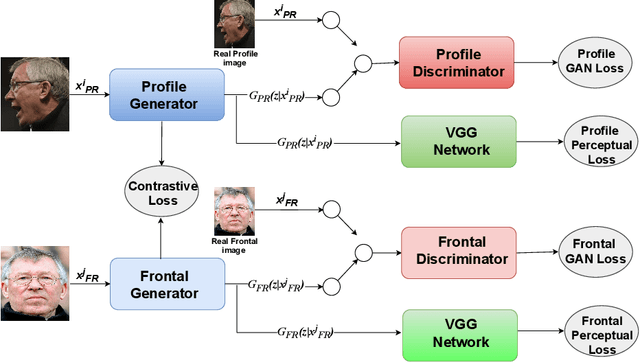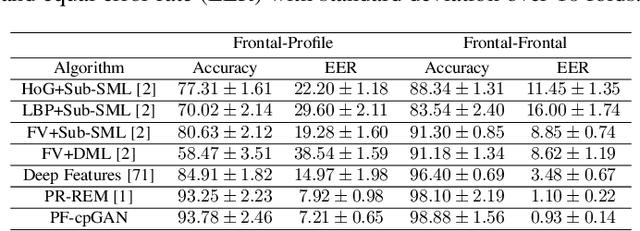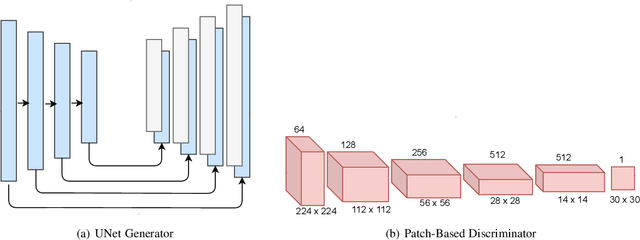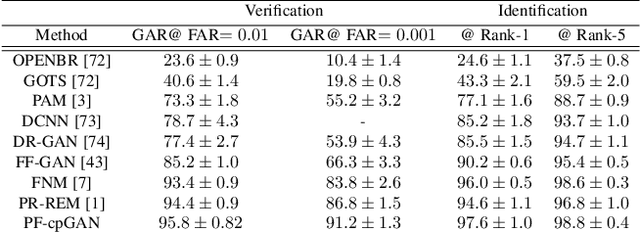Profile to Frontal Face Recognition in the Wild Using Coupled Conditional GAN
Paper and Code
Jul 29, 2021



In recent years, with the advent of deep-learning, face recognition has achieved exceptional success. However, many of these deep face recognition models perform much better in handling frontal faces compared to profile faces. The major reason for poor performance in handling of profile faces is that it is inherently difficult to learn pose-invariant deep representations that are useful for profile face recognition. In this paper, we hypothesize that the profile face domain possesses a latent connection with the frontal face domain in a latent feature subspace. We look to exploit this latent connection by projecting the profile faces and frontal faces into a common latent subspace and perform verification or retrieval in the latent domain. We leverage a coupled conditional generative adversarial network (cpGAN) structure to find the hidden relationship between the profile and frontal images in a latent common embedding subspace. Specifically, the cpGAN framework consists of two conditional GAN-based sub-networks, one dedicated to the frontal domain and the other dedicated to the profile domain. Each sub-network tends to find a projection that maximizes the pair-wise correlation between the two feature domains in a common embedding feature subspace. The efficacy of our approach compared with the state-of-the-art is demonstrated using the CFP, CMU Multi-PIE, IJB-A, and IJB-C datasets. Additionally, we have also implemented a coupled convolutional neural network (cpCNN) and an adversarial discriminative domain adaptation network (ADDA) for profile to frontal face recognition. We have evaluated the performance of cpCNN and ADDA and compared it with the proposed cpGAN. Finally, we have also evaluated our cpGAN for reconstruction of frontal faces from input profile faces contained in the VGGFace2 dataset.
 Add to Chrome
Add to Chrome Add to Firefox
Add to Firefox Add to Edge
Add to Edge